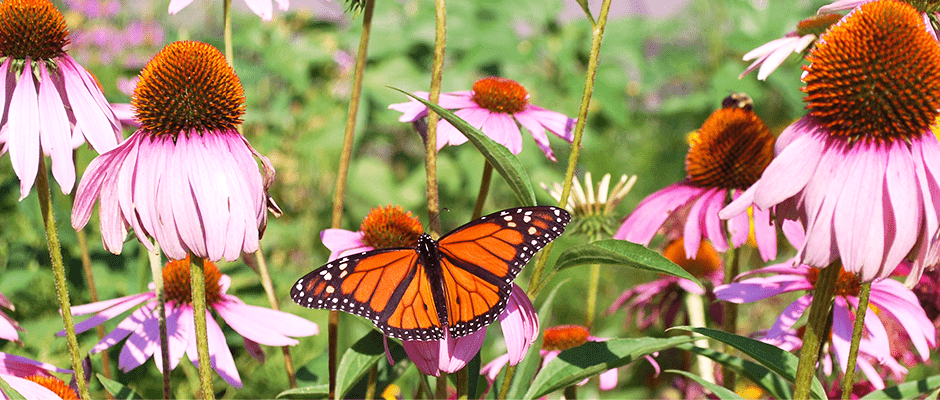Share this article
Monarchs need milkweed on agricultural lands
Without planting milkweed on agricultural lands in the Midwestern United States, monarch butterfly (Danaus plexippus) populations are unlikely to reach recovery targets, according to a recent analysis published in Environmental Research Letters.
In June 2014, former President Obama issued a presidential memorandum to promote a government-wide effort to restore habitats for pollinators, including the monarch butterfly. As part of this effort, Wayne Thogmartin, a research ecologist with the U.S. Geological Survey and lead author of the recent analysis, joined a group of monarch butterfly experts to study the species and work on habitat restoration efforts.
“We identified that the [Eastern migratory population of the] species had declined by greater than 80 percent over the last two decades,” said Thogmartin, who is a TWS member. He further explained, “This decline, if the trajectory were to persist over coming decades, would lead to a high level of extinction risk.” This rapid decline led to a tri-national goal between the U.S., Mexico and Canada to restore sufficient monarch habitat across its migratory range by 2020 to support a population occupying 6 hectares of overwintering habitat in Mexico — which Thogmartin explains is how monarch populations are measured.
Thogmartin and his colleagues then looked at what it would take in the Midwestern U.S. to restore the population to a 6-hectare overwintering size. This largely focused on identifying areas in the Midwest where milkweed could be restored. Milkweed is the monarch caterpillar’s main food source and a decrease in the amount of milkweed in the Midwest is considered a principal driver of the monarch’s population decline.
John Pleasants of Iowa State University, co-author of this milkweed restoration analysis, estimates that current milkweed numbers in the U.S. (1.3 billion stems) can support an overwintering monarch population occupying approximately 3.2 hectares. To reach the population goal of 6 hectares, his analysis suggests the addition of approximately 1.3 to 1.6 billion stems of milkweed in the Midwest.
The researchers then created a spatially explicit map of current milkweed distribution based on the literature and compared that to a map of where milkweed is needed and the likelihood for different sectors of society to plant milkweed. These sectors included agricultural lands, urban and suburban areas, government-protected grasslands, Conservation Reserve Program land and rights of way along roadsides and power lines and rail lines. They then created 218 scenarios of different sectors participating in monarch conservation and found that only 16 yielded results necessary to restore monarchs to the population goal. Further, all of those 16 scenarios included participation by agriculture.
“In sum, we found that any single one of our societal sectors alone can’t reach the target goal for milkweed,” Thogmartin said. He continued, “If the agricultural sector doesn’t contribute, then all of the other sectors are insufficient even together.” This means that milkweed must be planted on agricultural lands. Thogmartin then emphasized, “The reason why agriculture has such importance is because of its huge footprint,comprising more than 70 percent of potential monarch butterfly habitat.”
There are a few possibilities to get farmers to participate in monarch conservation on agricultural land, according to Thogmartin, including renewal of conservation friendly elements of the Farm Bill and/or greater economic incentives.
“We didn’t propose any specific approach here because it’s going to take everybody coming together to address this problem,” he said. “I’m sure when bringing everybody together, we’ll come up with some very innovative ways of bringing about solutions.”
Monarch butterflies were petitioned for listing under the Endangered Species Act in 2014, and the U.S. Fish and Wildlife Service is now conducting an assessment to determine if listing is warranted.
Header Image: Researchers recently found monarchs flew an average of 7.5 miles per hour. ©Silvia Wineland








